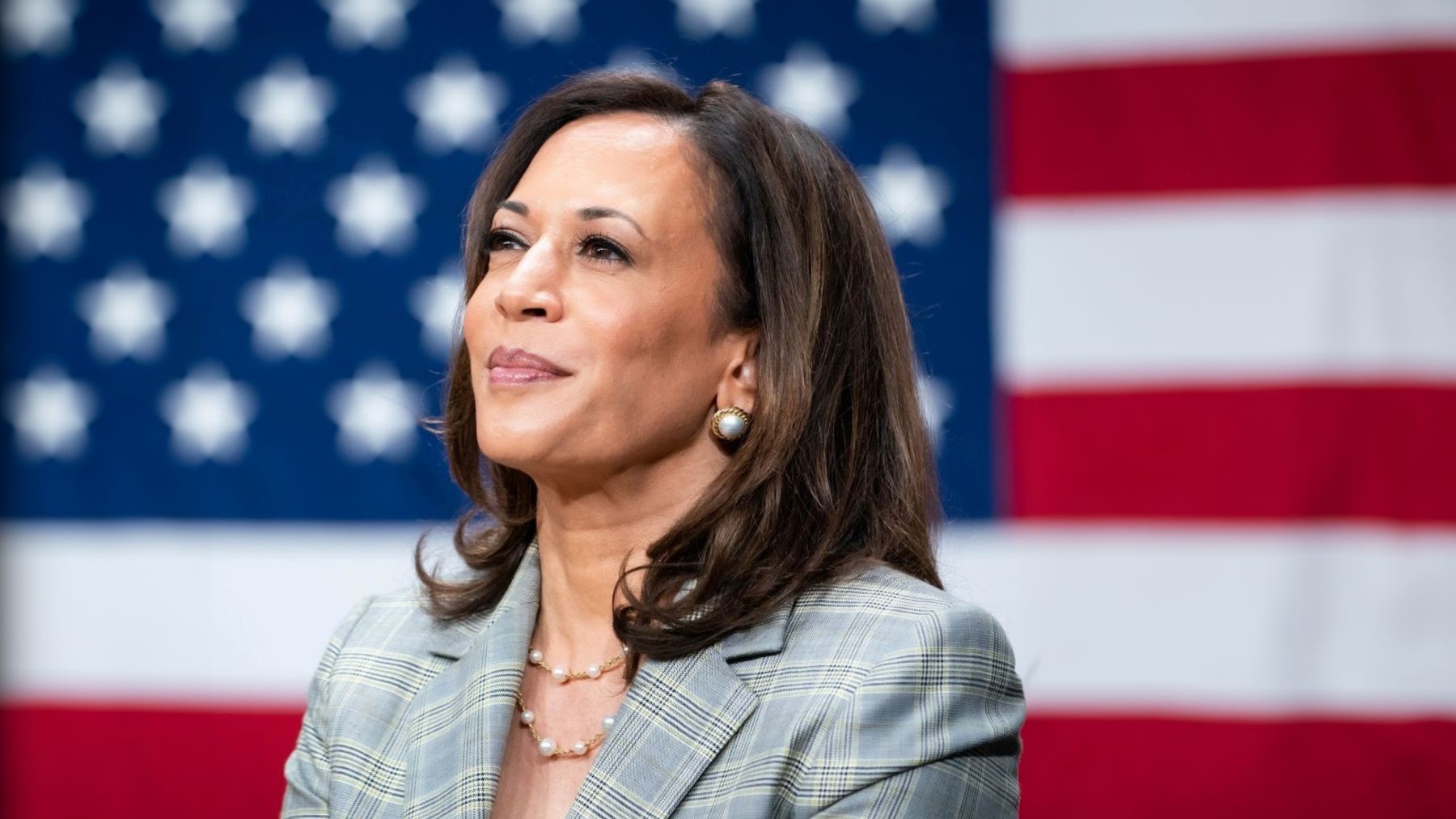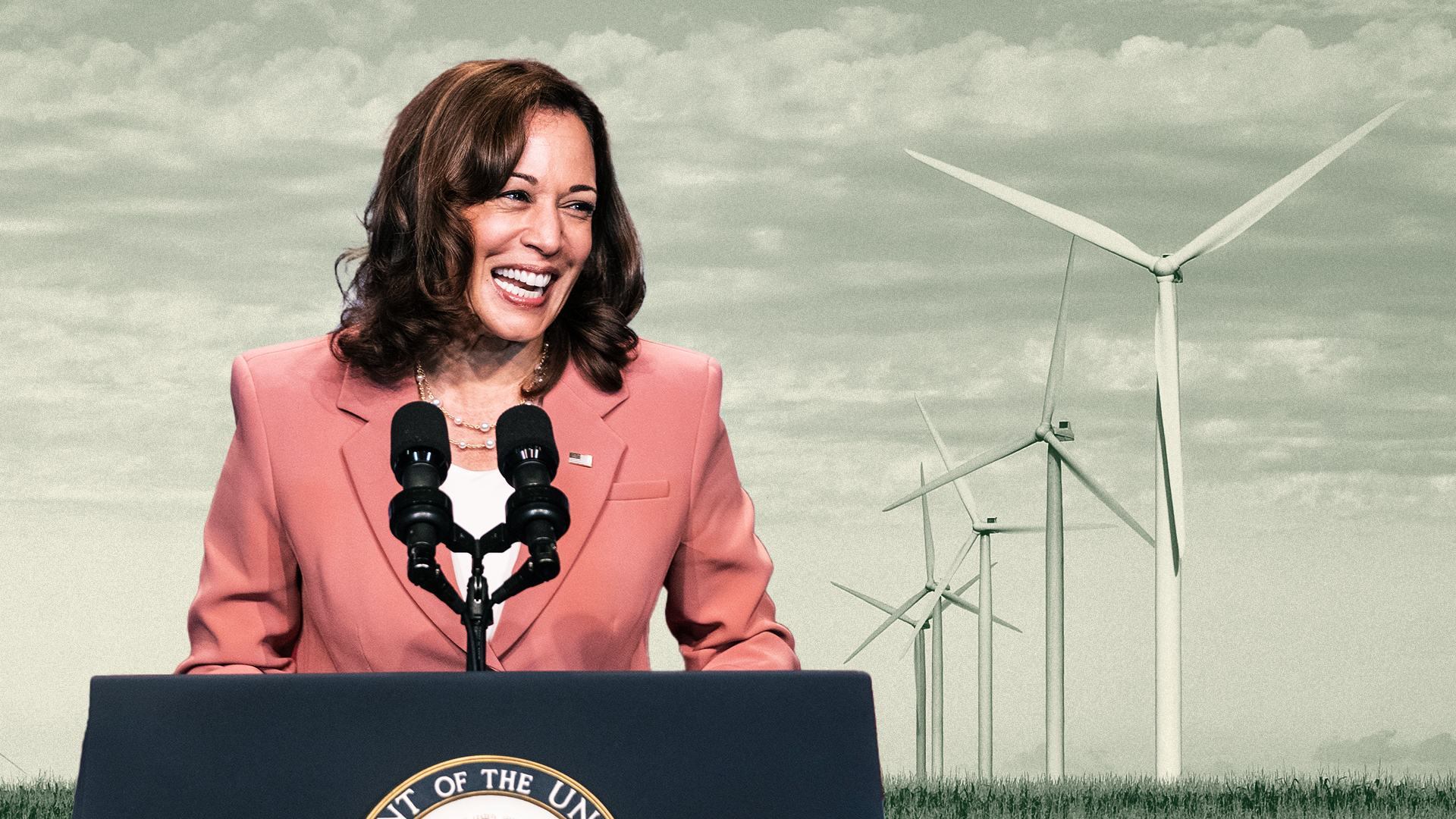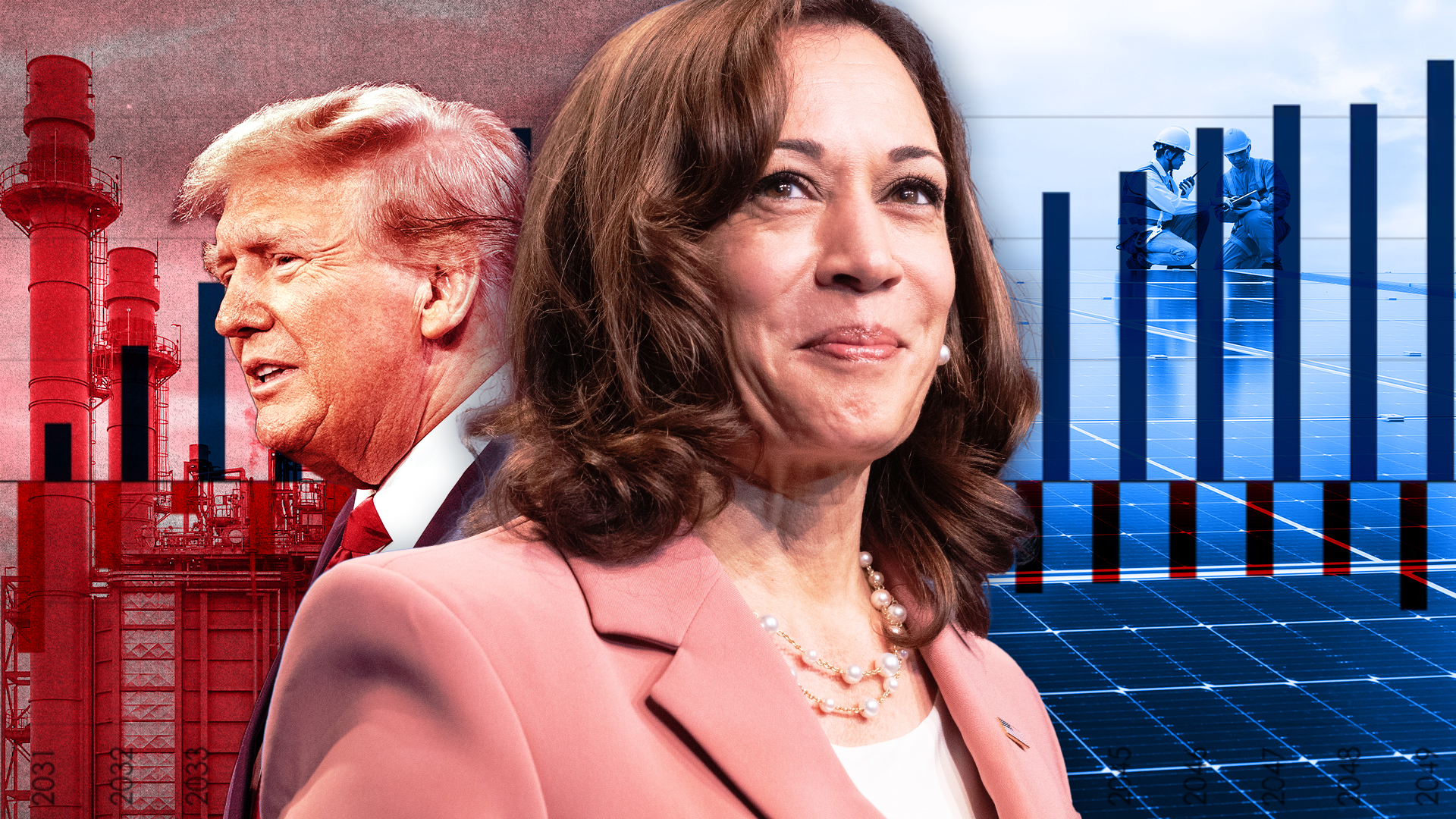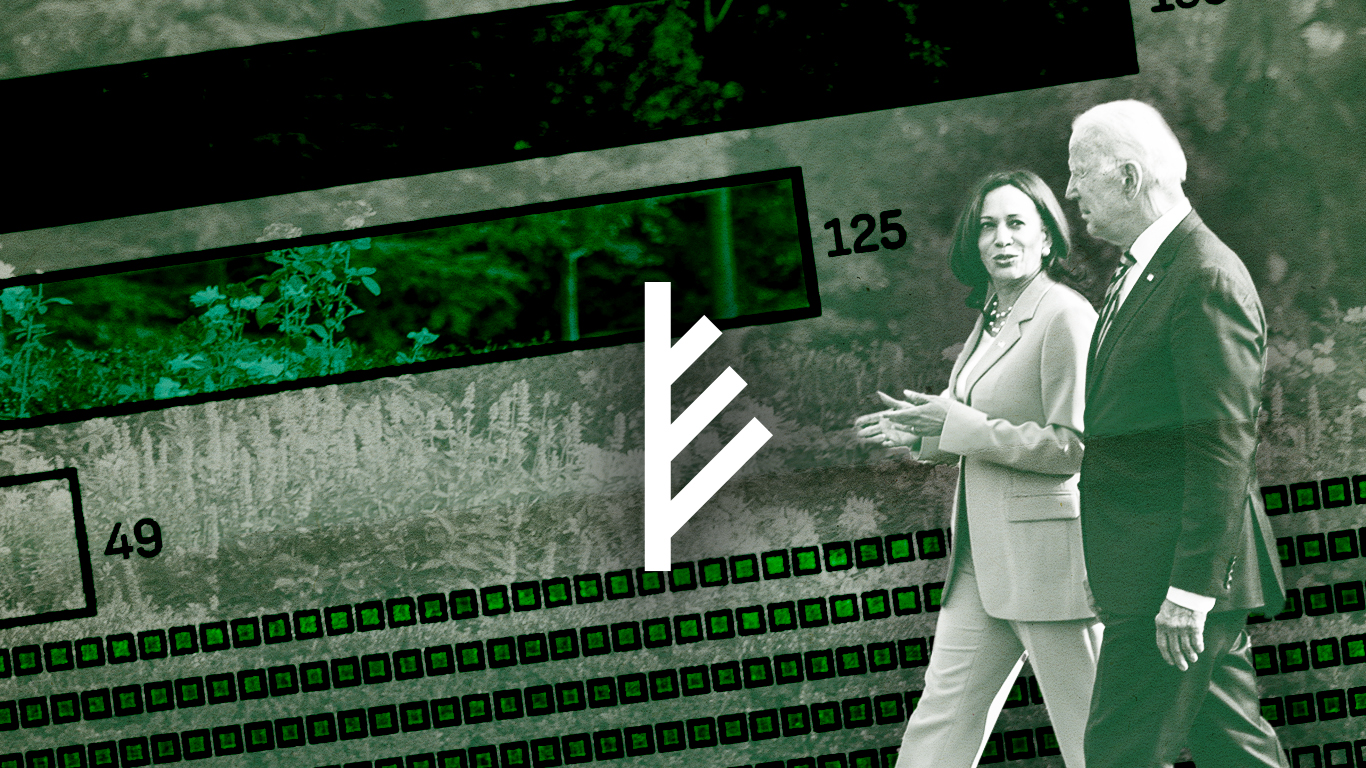Kamala Harris just issued an 82-page detailed economic plan and made a keynote speech on her vision. We read that plan, and here’s the good news: It charts a course not just on cleaning up climate pollution, but for a more affordable, prosperous country that truly invests in our communities.
Vice President Harris cast the deciding vote on the most important climate law in our history—the Inflation Reduction Act. Now, she and Governor Tim Walz have laid out a plan to build on that extraordinary foundation with an economic vision that drives forward climate action in a new opportunity economy for all. Today’s actionable plan also matches up well with our Evergreen Action Plan 2.0, which was built in conversation with the climate movement to highlight key priorities for the next president. Here are some highlights of the Harris-Walz economic vision from a climate perspective.
What we’ve learned from the Inflation Reduction Act is that big investments in key sectors, alongside real efforts to uplift workers and communities, cutting climate pollution, and leveling up clean energy, change the world. Leading states, innovative entrepreneurs, and community advocates all benefit when we focus on building up the middle class to build a safer climate future and a cleaner economy.
In today’s plan, we see a concrete vision to build on that foundation, with an exciting focus on modernizing American industry and tackling the housing crisis. The plan supports lower energy costs by helping Americans get free of costly fossil fuels and access clean energy options that are cheaper and longer-lasting. It also builds upon those solutions with focused tools that will help create a safer climate future for all of us by investing in innovative approaches. Climate isn’t just one issue: It touches on every issue in our lives, from health care to justice to economic security. Kamala Harris and Tim Walz have shown they understand the critical role that clean energy and climate change play in our nation’s economy.
Here Are Four Key Toplines
1. “America Forward” tax credits and an innovation ecosystem for industry
Vice President Harris is calling for investing in emerging industries, including a major focus on cleaning up steel and cement, and making sure industry can compete—and that union workforces benefit. That’s spot on, especially because the industrial sector is one of the biggest remaining sources of climate pollution.
The industries of the future need to be low or zero carbon, and America can build that technology while revitalizing our industrial base, as we’ve written. A modern industrial supply chain, backed up by a fully clean power grid, will also fight inflationary pressures, avoid costs from fossil fuels, and keep tax bases strong. And the Harris-Walz plan is clear that pro-union protections need to be baked into public planning, to ensure that workers capture the benefits. It also provides strong funding and support for small businesses seeking to enter growing fields—and especially clean industry.
2. Abundant, affordable energy-efficient housing
The housing crisis is a climate crisis; the lack of affordable housing leaves families exposed to climate disasters, dependent on long gasoline-powered drives between work and home, and stuck in old run-down buildings that often have dangerous fossil equipment. Today’s Harris-Walz plan would dramatically expand tax credits for 1.2 million more affordable rental homes, clear the way to retrofit 400,000 buildings, and launch a $40 billion federal effort to build affordable and energy-efficient homes near good transit options. That’s a huge climate and community win.
3. Deeply investing in the care economy, communities, and workers
We need an economic transition that works for real people, and supports us as our clean energy economy develops. That means capturing the benefits of our prosperity, and these major new clean energy investments, for ordinary people, not billionaires. The Harris-Walz plan would do that by investing in affordable childcare, protecting and improving health care, and ensuring that big economic investments reach every community in this country.
It includes a major expansion of the Child Tax Credit, investments in childcare, pension protections, caps on prescription drug prices, and passage of the PRO Act to support unions. It expands paths to good jobs without a college degree, prioritizes economic development nationally, and cuts taxes for middle class families. We need to address economic precarity to give people room to move into a new clean future, and to channel the prosperity from our investments to the public—and that’s what this plan proposes.
4. Build on and accelerate the implementation of the Inflation Reduction Act
Moving away from volatile fossil fuel prices, building up reliable supply chains, and creating new clean industries is a recipe for affordable products, good jobs, and a stable middle class in a century that will be powered by clean energy. While Donald Trump and JD Vance propose to tear up our progress, abandoning the middle class and sabotaging America’s growing world leadership on clean energy, the Harris-Walz plan recognizes that those investments are the foundation of our booming economy and of the growth ahead and identifies key ways to move implementation further and faster, including tools that would speed up permitting of clean energy and other infrastructure we need.
What we saw today, in short, is a vision that not only continues climate progress, but deepens it. This vision would bring us the clean industry and clean and abundant housing we need, cutting pollution along the way to building a better country where we all can get ahead. And the experts have run the numbers—that future creates billions in economic growth, saves lives, and creates jobs, unlike the dangerous plans pushed by Project 2025 and Trump/Vance.
Nonpartisan modeling shows us that smart forward-thinking climate policies can boost our economy by $450 billion annually by 2030, create 2.2 million jobs, save households $7.7 billion on energy costs, prevent 3,900 premature deaths from air pollution, and cut greenhouse gas pollution enough by 2030 to hit net-zero in 2050. By contrast, Project 2025 would put our 2030 and 2050 climate targets out of reach, leading to U.S. GDP plummeting $320 billion per year by 2030 and $150 billion per year by 2050, the loss of 1.7 million jobs in 2030, and 260,000 lost jobs in 2050.
There are only weeks left until the election. VP Harris just laid out the safer climate future we could have—and the more affordable, prosperous, caring country that makes that future possible. It’s time to do everything we can to secure that future, now.





